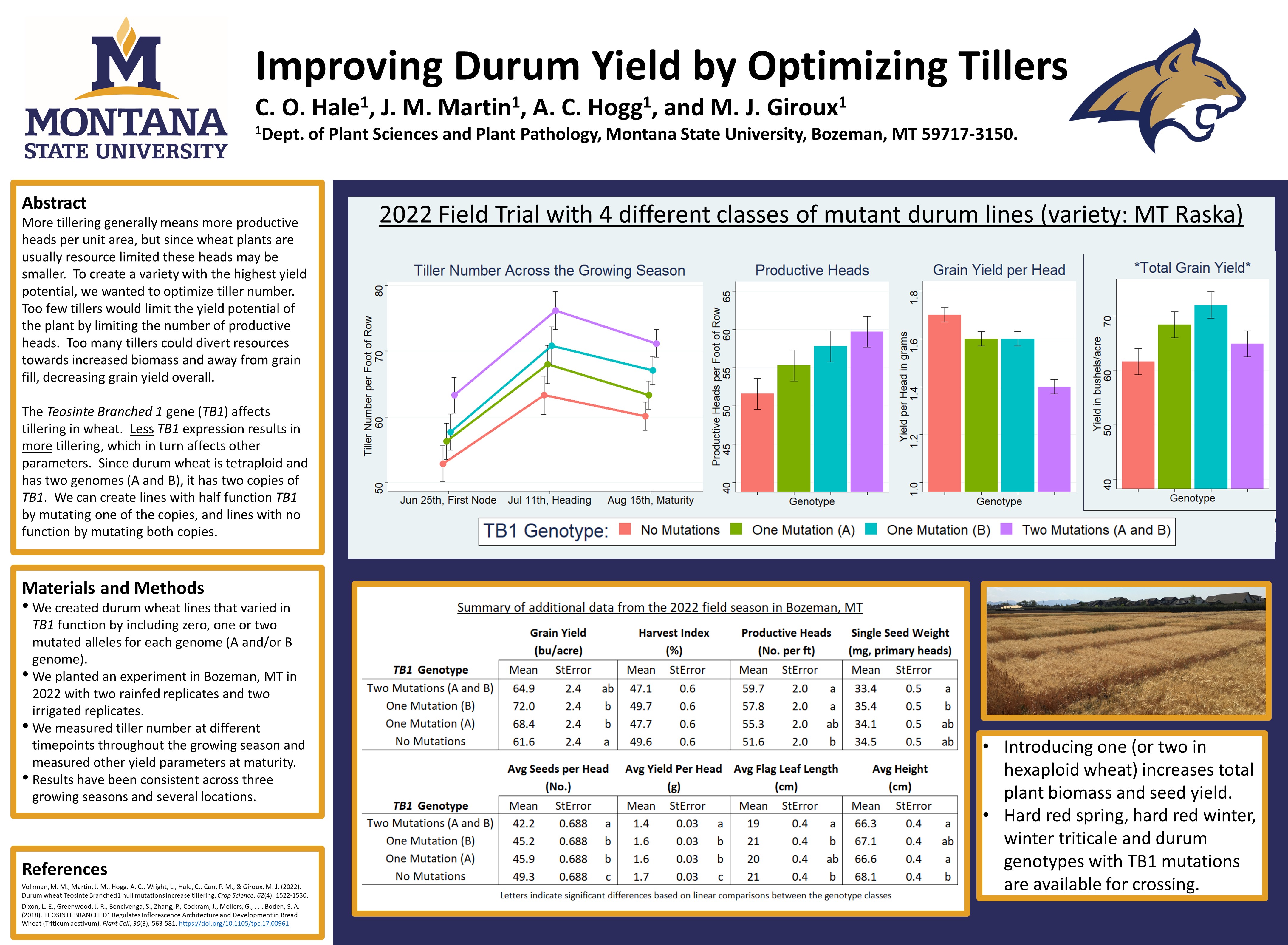Alleles for Intermediate Height Durum Wheat with Optimal Yield and Quality in Montana, North Dakota, and Canada
Intermediate height varieties from novel gene mutations increase yield 10% without
decreasing quality.
Background:
The ability to increase yield without reducing protein content and quality is paramount to increasing economic returns for durum growers. Dr. Norman Borlaugh and the “Green Revolution” of the 1950’s and 1960’s focused largely on identifying the genes that control plant height and tillering (the production of more than one stem per seed). As an example, modern semi-dwarf hexaploid wheat varieties have approximately 10-14% higher yields compared to the standard height varieties that preceded the Green Revolution because the plants focus more energy on seed production than stem growth. In addition, improvements in tillering have helped optimize the balance between the number of stems and the amount and quality of seed produced. However, modern durum varieties are still too tall or too short to maximize their potential in the prime growing areas of Montana, North Dakota, and Canada.
Technology Overview:
MSU’s two novel Rht alleles enable intermediate height durum plants that are optimal for the current primary production regions in Montana, North Dakota, and Canada. Field trials on these alleles have demonstrated yield increases up to 10% in intermediate height plants without a decrease in protein. Applications of MSU’s TB1 mutants in durum have generated increased tillering with up to 17% increased grain yield with no change in seed size or protein content:
A combination of one MSU TB1 knockout and one MSU Rht allele in combination with a
high producing full height variety would create an intermediate height durum variety
optimized for conditions in Montana, North Dakota, and Canada.
Montana State University (MSU) has identified a suite of Reduced Height (Rht) and
Teosinte Branched 1 (TB1) gene mutations that can be applied individually or stacked
to create optimal height and tillering balances in durum without sacrificing yield
and quality. Because Rht and TB1 affect different mechanisms within plants, the alleles
of each can be employed in various combinations to fine tune plant height and tillering
for the purposes of maximizing economic return. Most current options involve tradeoffs
between yield and seed protein. MSU’s innovations have demonstrated the ability to
increase yield without sacrificing protein quality. In fact, in many instances, protein
levels are not only maintained but actually increased.
Benefits:
- Increased yield (up to 17%) while maintaining or even increasing seed protein
- Not genetically modified (Non-GMO) solutions to optimize variety performance
- Rht and TB1 discoveries can be stacked to fine tune varieties
- Ability to produce intermediate height durum varieties that are optimal for prime growing regions in Montana, North Dakota, and Canada
Applications:
- Plant breeding
- Grain production
- Forage production
- Dual-purpose wheat production
Opportunity:
- Available for license
- Potential to collaborate in ongoing research
- Potential to introduce MSU’s Rht and TB1 innovations into partner’s proprietary recurrent parent lines
Contact:
Daniel Juliano
(406) 994-7483
daniel.juliano@montana.edu

